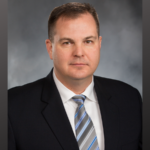 “It’s Seattle’s state now in politics, and everybody else is living in it,” read the headline of a newspaper column published soon after this year’s legislative session ended. “There’s no question that what just went down at the statehouse marked a political breakthrough of sorts — for the progressive left,” the columnist wrote.
“It’s Seattle’s state now in politics, and everybody else is living in it,” read the headline of a newspaper column published soon after this year’s legislative session ended. “There’s no question that what just went down at the statehouse marked a political breakthrough of sorts — for the progressive left,” the columnist wrote.
The column overlooks the fact that plenty of people living in Seattle don’t view themselves as being on the political left, much less the “progressive left.” You wonder: Do they feel their views were well-represented at the Capitol?
This year, people concerned about their representation in Olympia and the “other Washington” have a once-in-a-decade opportunity to speak up. The state’s redistricting commission is holding a series of public meetings to decide what our legislative and congressional districts should look like for the next 10 years.
As people move into, out of, or within Washington, the populations within our 49 legislative and 10 congressional districts fluctuate. Since 1991, a redistricting commission has met each year ending in “1” to shrink, expand or shift district boundaries based on the latest federal census results. The goal, to quote the state constitution, is to make each district’s population “as nearly equal as practicable to the population of any other district.”
In more than 2/3rds of the states, redistricting is handled directly by legislators, leaving the door open to partisanship and “gerrymandering.” Washington left that behind in 1983, when our voters put the primary responsibility for redistricting in the hands of an independent commission.
The commission has four voting members – two appointed by Republican legislative leaders, and two by Democratic legislative leaders. At least three of the four must support the new boundaries, and when their work is submitted to the Legislature for a vote, no further changes may be made without agreement from at least 2/3rds of the Senate and House.
The commission’s plans, which the constitution declares “shall not be drawn purposely to favor or discriminate against any political party or group,” must be completed by Nov. 15. People have the option of submitting comments by email, mail, phone, video or through a webform, in addition to the public meetings.
A newspaper report about the June 14 public meeting, which focused on the Third Congressional District and the associated legislative districts, detailed how concerns about representation were a central theme. “If your politics don’t align with your district’s, then your voice isn’t heard,” a Clark County resident told the commissioners.
The two commission members appointed by Republicans are former legislators, who served in bipartisan delegations from their respective districts. I trust them to listen to the people – but that can happen only if the people speak. Be part of this important democratic process. Visit the redistricting commission website and get involved!
— Senate Republican Leader John Braun
The state Redistricting Commission’s next public outreach meetings will be Tuesday, June 22, regarding the boundaries of the 2nd Congressional District, the 10th Congressional District and the legislative districts contained within them. Click on this web page for details.






